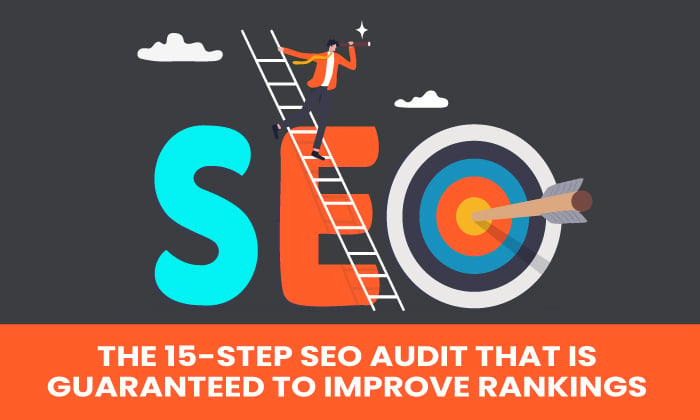Building Digital Bridges: Progressing Techniques with Linkdaddy Link Building
SEARCH ENGINE OPTIMIZATION Vs. SEM: Understanding the Trick Differences
SEO, which stands for Search Engine Optimization, focuses on boosting a website's presence and natural position on search engine results web pages. On the various other hand, SEM, or Search Engine Advertising, involves paid advertising to boost a website's exposure on search engines. Recognizing the vital differences between Search engine optimization and SEM is essential for companies looking to enhance their online visibility and drive web traffic to their websites.

Interpretation of SEO
SEARCH ENGINE OPTIMIZATION, or Seo, describes the practice of optimizing websites to improve their presence and positions on search engine results web pages (SERPs) It includes different methods and methods focused on boosting organic, or non-paid, website traffic to a website. The best goal of SEO is to improve a site's on-line presence and draw in even more targeted site visitors.
Among the vital facets of search engine optimization is keyword optimization (https://nevadasquare.com/press/linkdaddy-announces-agency-backlink-local-business-directory-listings-service/102516). When looking for details or products associated to a specific website, this involves performing extensive research study to recognize relevant keyword phrases that individuals are most likely to look for. By integrating these keyword phrases purposefully into the website's web content, meta tags, and URLs, search engine optimization intends to enhance the website's importance and position for those particular search terms
Another vital element in search engine optimization is on-page optimization. This includes optimizing numerous components on a web site, such as title tags, headings, photos, and internal web links, to make them more search engine-friendly (link building). By making sure that these components are effectively structured and appropriate to the website's web content, search engine optimization helps internet search engine understand the context and importance of the website
Furthermore, SEO likewise consists of off-page optimization methods, such as web link structure. This involves obtaining high-quality backlinks from various other respectable internet sites, which indicates to internet search engine that the site is reliable and authoritative. By developing a solid network of backlinks, search engine optimization improves a website's credibility and increases its possibilities of placing higher in search results.
Definition of SEM
SEM, or Internet Search Engine Marketing, is an advertising and marketing strategy that includes promoting web sites and enhancing their exposure with paid advertising and marketing on internet search engine results pages (SERPs) Unlike SEO, which concentrates on optimizing web sites to enhance organic search rankings, SEM utilizes paid advertising and marketing to drive traffic to a website.
One of the key components of SEM is pay-per-click (PPC) advertising. With pay per click, marketers bid on key phrases that are pertinent to their target audience. When a user searches for those key words, the advertisements appear at the leading or side of the search results. Advertisers just pay when an individual clicks on their advertisement, hence the term "pay-per-click."

SEM additionally includes other kinds of paid marketing, such as display screen ads, remarketing ads, and shopping advertisements. Show ads are banners or aesthetic advertisements that appear on websites within the Google Display Network. Remarketing ads target users who have previously seen a web site, serving them ads as they search other sites. Purchasing ads, on the other hand, promote certain products and present relevant details, such as rate and schedule.
Purposes of SEO and SEM
The goals of both seo (SEO) and online search engine marketing (SEM) rotate around boosting a website's visibility and driving targeted traffic. However, the techniques and approaches employed by each differ substantially.
The major goal of SEO is to improve a site's natural search ranking on online search engine results web pages (SERPs) This is attained by maximizing different components on the web site, such as material, meta tags, and site structure, to make it a lot more pertinent and appealing to look engines. By doing so, search engine optimization aims to attract more natural traffic from customers proactively looking for associated keyword phrases or topics.
On the various other hand, SEM concentrates on raising an internet site's exposure through paid advertising on internet search engine. The main goal of SEM is to drive targeted traffic to a web site by bidding process on search phrases and showing advertisements in online search engine outcomes. This approach permits companies to get to a broader audience quickly and efficiently.

Trick Components of SEO
To properly implement search engine optimization, it is critical to understand the key elements that add to enhancing a site's organic search position. These components can be extensively categorized right into off-page aspects and on-page factors.
On-page aspects refer to the components that are directly existing on a site and can be enhanced for better online search engine presence. This includes the web site's web content, keyword usage, meta tags, URL structure, web page titles, and headings. By maximizing these components, online search engine can better comprehend the relevance and context of the web site's web content, leading to higher rankings.
Off-page elements, on the other hand, concentrate on outside signals that affect a website's authority and reputation. This includes backlinks from other credible sites, social media signals, and online mentions (https://www.spreaker.com/user/16890315/scalable-link-building-improve-organic-r). The even more pertinent and high-grade back links a web site has, the much better its possibilities of ranking greater in online search engine results pages
Furthermore, user experience is a vital part of SEO. seo. Online search engine focus on sites that offer a favorable individual experience, including rapid packing times, mobile-friendliness, and very easy navigation
Trick Parts of SEM
As opposed to search engine optimization, SEM incorporates an unique set of crucial components that focus on paid advertising and marketing and driving instant presence in online search engine outcomes. These components consist of search engine advertising and marketing, likewise called pay-per-click (PAY PER CLICK) advertising, keyword study, ad development, and campaign monitoring.
Online search engine advertising is an essential element of SEM. It entails bidding process on key words relevant to your business and producing text or display ads that will appear in search engine results when those keyword phrases are looked. With search engine marketing, you can target certain demographics, areas, and also time of day to reach your wanted target market.
Keyword research study is one more crucial part of SEM. It entails recognizing the key words that your target audience is utilizing to look for solutions or products similar to your own. By performing detailed keyword research, you find more info can maximize your advertisements and ensure they are shown to the appropriate individuals at the correct time.
Advertisement production is the process of developing engaging and persuasive advertisements that will certainly entice individuals to click them. Well-crafted ads have a strong call-to-action, pertinent messaging, and a clear worth recommendation.
Lastly, project management entails surveillance and enhancing your SEM projects to guarantee they are carrying out properly. This includes monitoring metrics such as click-through prices, conversion rates, and return on financial investment (ROI) to make data-driven choices and accomplish the most effective outcomes.
Conclusion
In final thought, SEO and SEM are two distinctive methods in electronic advertising. Search engine optimization focuses on maximizing sites to boost natural search rankings, while SEM includes paid advertising to increase exposure on internet search engine results web pages. Both methods have their own objectives and vital elements that add to their effectiveness. Understanding the differences between search engine optimization and SEM is critical for businesses to develop a comprehensive internet marketing technique.
SEARCH ENGINE OPTIMIZATION, which stands for Search Engine Optimization, focuses on boosting a site's presence and organic position on search engine results pages. On the various other hand, SEM, or Look Engine Marketing, includes paid advertising and marketing to increase a site's exposure on search engines (seo audit).SEO, or Look Engine Optimization, refers to the method of enhancing websites to enhance their visibility and rankings on search engine results pages (SERPs)The primary objective of Search engine optimization is to improve an internet site's organic search position on search engine results web pages (SERPs) Search engine optimization concentrates on optimizing sites to enhance natural search rankings, while SEM involves paid advertising and marketing to raise exposure on search engine results web pages